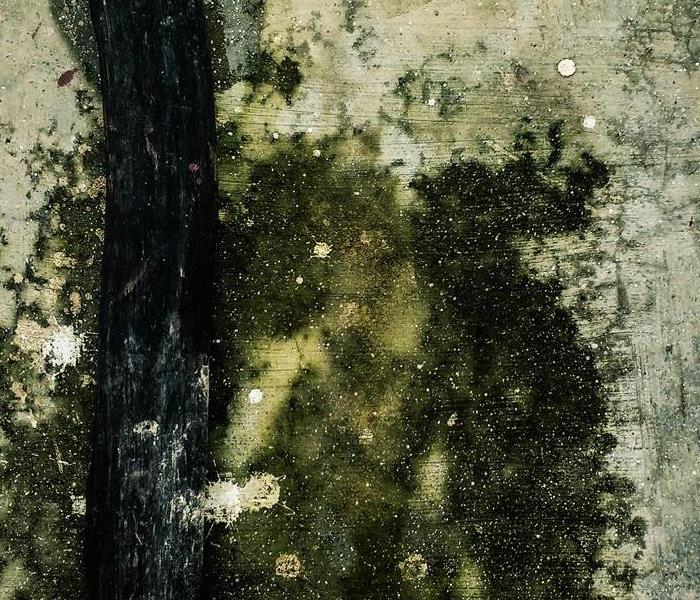What Does That Water Stain Indicate?
9/19/2022 (Permalink)
Water stains can be puzzling. Is that stain from a leaky pipe or just a drop of water that seeped in from the rain? Either way, it's important to get to the bottom of the matter quickly. After all, water damage is one of the most common and costly problems homeowners face.
Here are some of the most common water stains and what they might indicate:
Stains on the Ceiling
You likely have a leaking roof or an issue with your gutters if you notice a water stain on your ceiling. When gutters become clogged with leaves and debris, they can't properly funnel water away from your home. Clogged or broken gutters cause water to back up and seep into your home, leading to water stains on the ceiling.
This leakage can also occur around roof vents, chimneys, and skylights. If you have a water stain on your ceiling, it's imperative to call a professional to diagnose the problem and make the necessary repairs.
Stains on the Walls
Water stains on your walls could be caused by several issues, including leaks in your pipes or roof. If you have a water stain on your wall, it's important to determine the source of the leak, fix it, and prevent further damage.
Stains could also result from condensation, often in homes with poor insulation or ventilation. This water damage is most common in bathrooms, kitchens, and laundry rooms. If you have condensation on your walls, you'll need to improve the home's airflow.
You might also see wall-stains after heavy rains or storms. If water is seeping into your home from the outside, you must waterproof your walls to prevent further damage.
Stains on the Floor
Leaks in pipes or appliances usually cause water stains on your floors. If you have a water heater, washing machine, or dishwasher, frequently check for leaks around these appliances. You should also check the area around your toilets and sinks for leaks.
If you have hardwood floors, water stains can form due to leaks in the roof or windows. If you have tile floors, water stains are usually caused by leaks in the grout or caulking.
Your flooring material is also significant in its susceptibility to water damage. For example, hardwood floors can warp and buckle when exposed to too much water. Tile and linoleum floors are more resistant to water damage, but they can still be stained by water.
Water can seep through cracks in tile or wooden floors, causing the material to swell and discolor. If you have water stains on your floor, it's important to determine the source of the leak and fix it immediately to prevent further damage.
Stains around Windows
If you notice water stains around your windows, it's likely due to condensation. When warm air inside your home hits a cold windowpane, it causes water to condense and form a stain.
You'll need to improve the insulation in your home to prevent condensation stains. This can be done by adding weather-stripping around your windows and doors. You should also open your curtains and blinds during the day to allow sunlight and improve air circulation.
Brown or Yellow Stains
If you notice brown or yellow stains on your walls, ceiling, or floors, it's likely due to rust. These stains are most commonly seen in homes with metal pipes. If you have galvanized steel or iron pipes, they could be rusting on the inside and causing these stains.
It's imperative to have rusty pipes replaced as soon as possible, as rust can cause your pipes to leak and lead to expensive repairs.
It's important to determine the source of the leak when you notice any water stains in your home and make the necessary repairs. Water stains are caused by several issues, including leaks in your roof, windows, or pipes.
These leakages can be devastating if not fixed immediately, so it's crucial to call a professional. For more information or to schedule a consultation, call SERVPRO of South and Northwest Grand Rapids at 616-622-9700 and let them help you get your home back to normal.




 24/7 Emergency Service
24/7 Emergency Service
